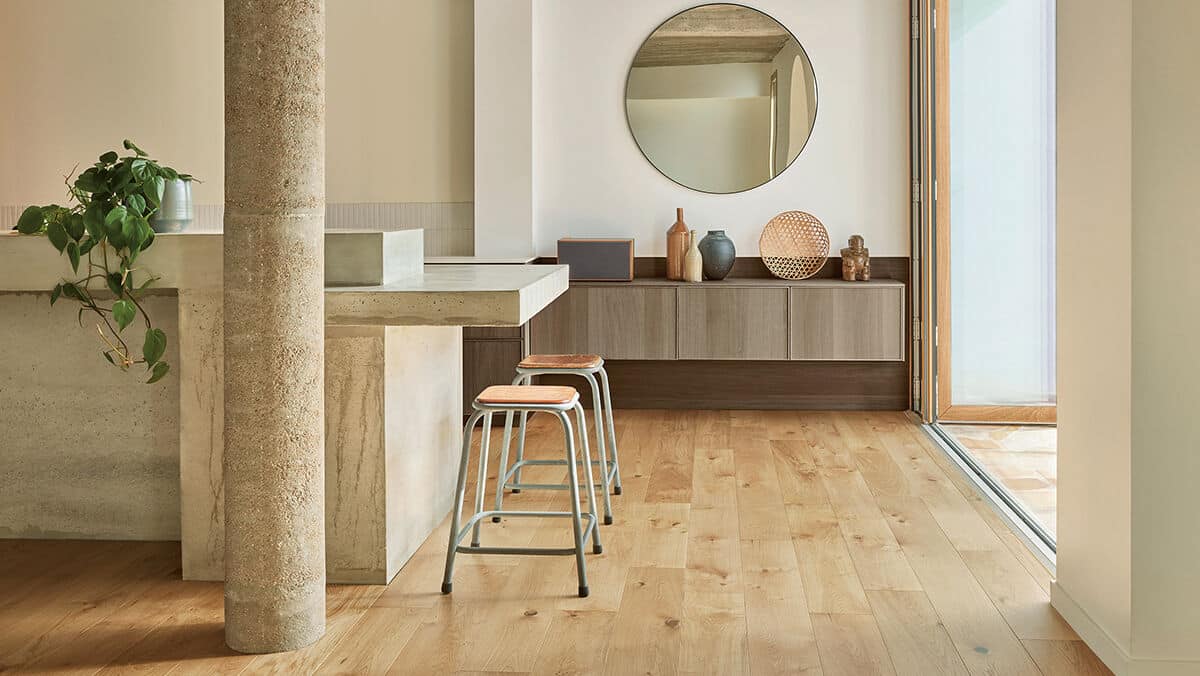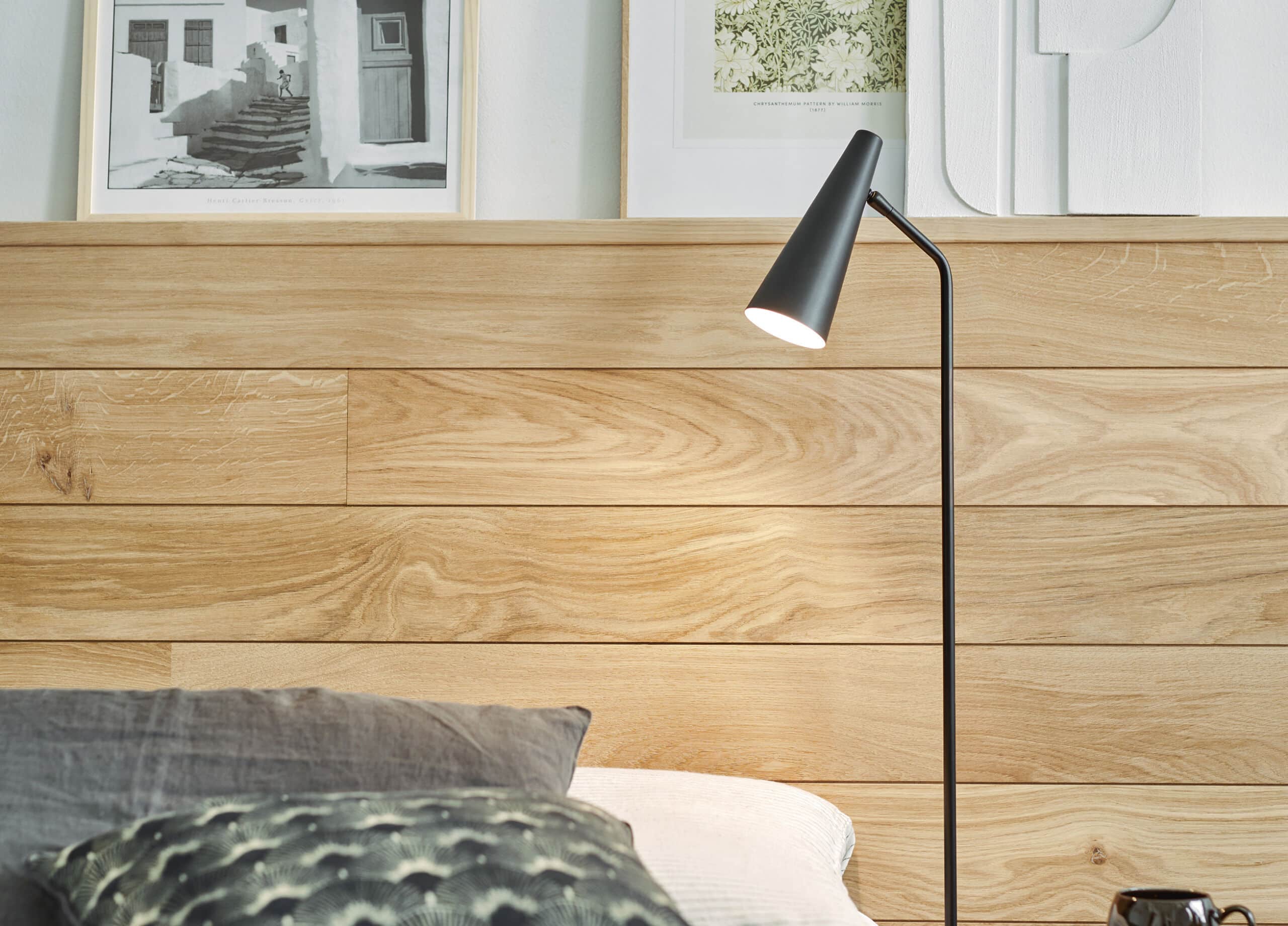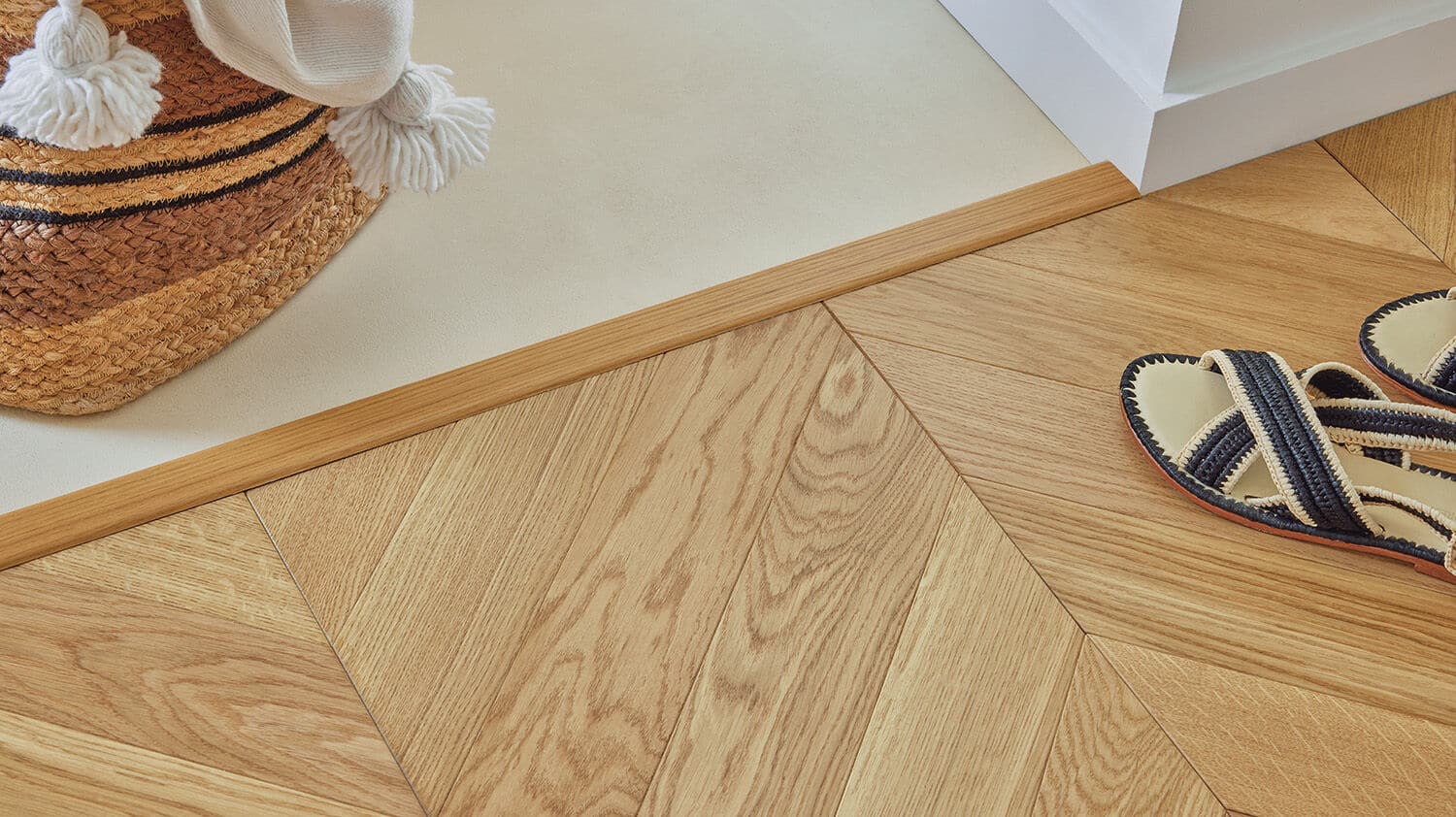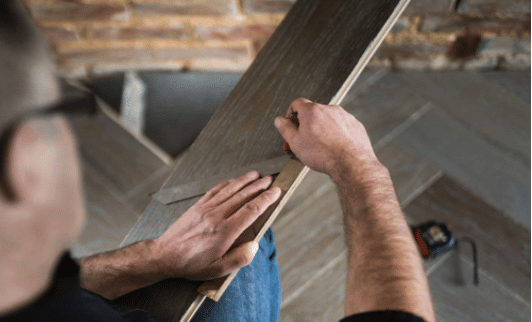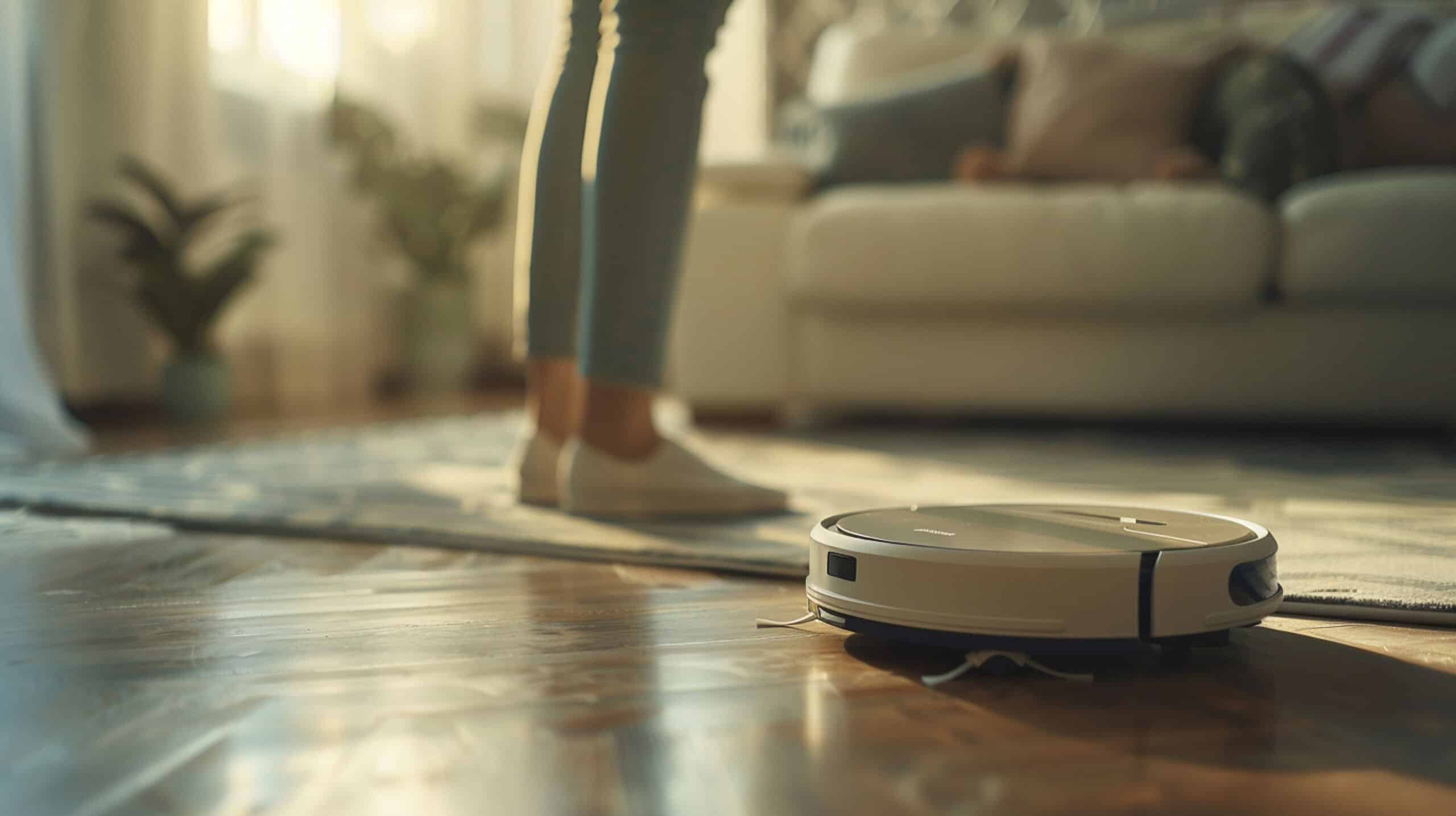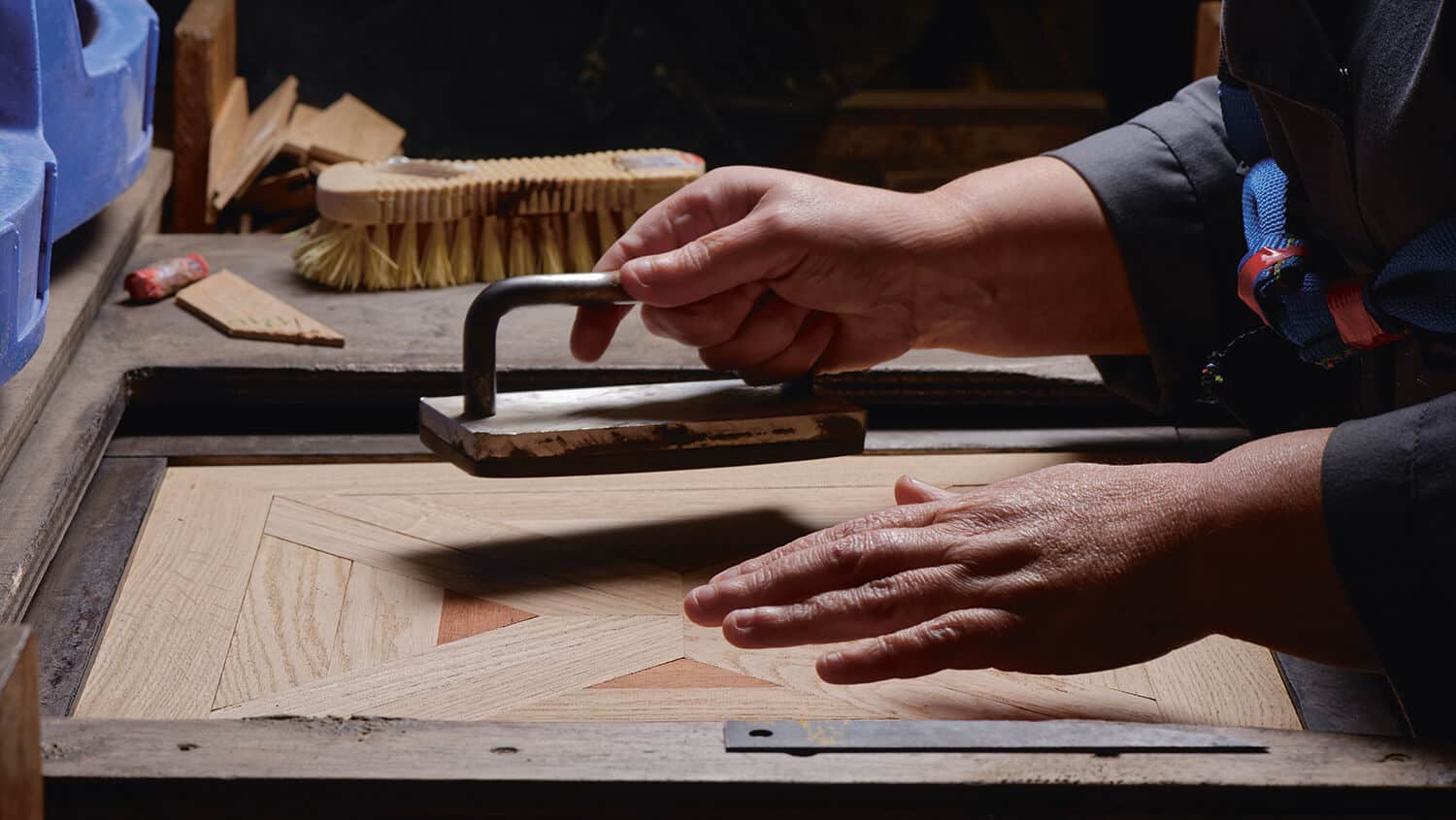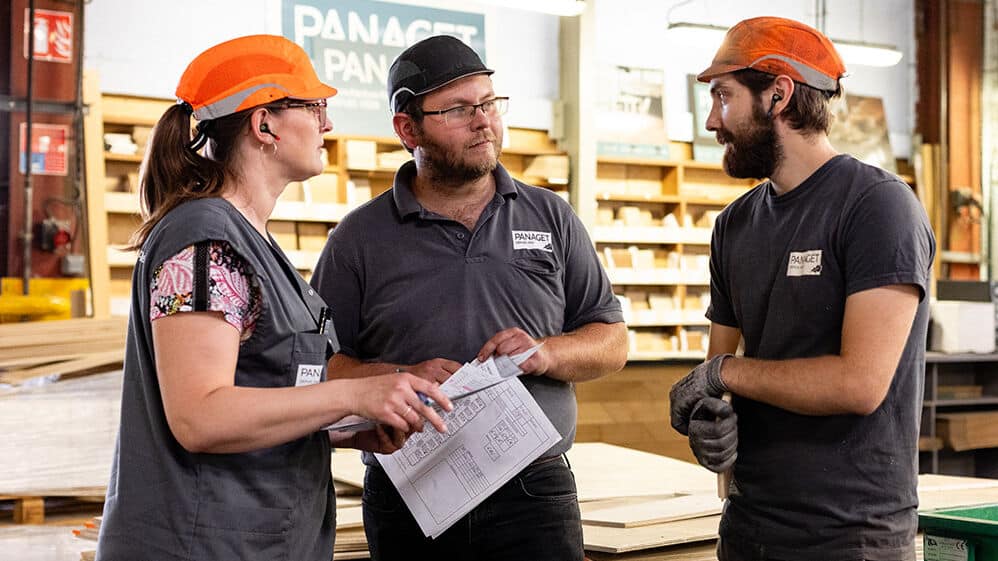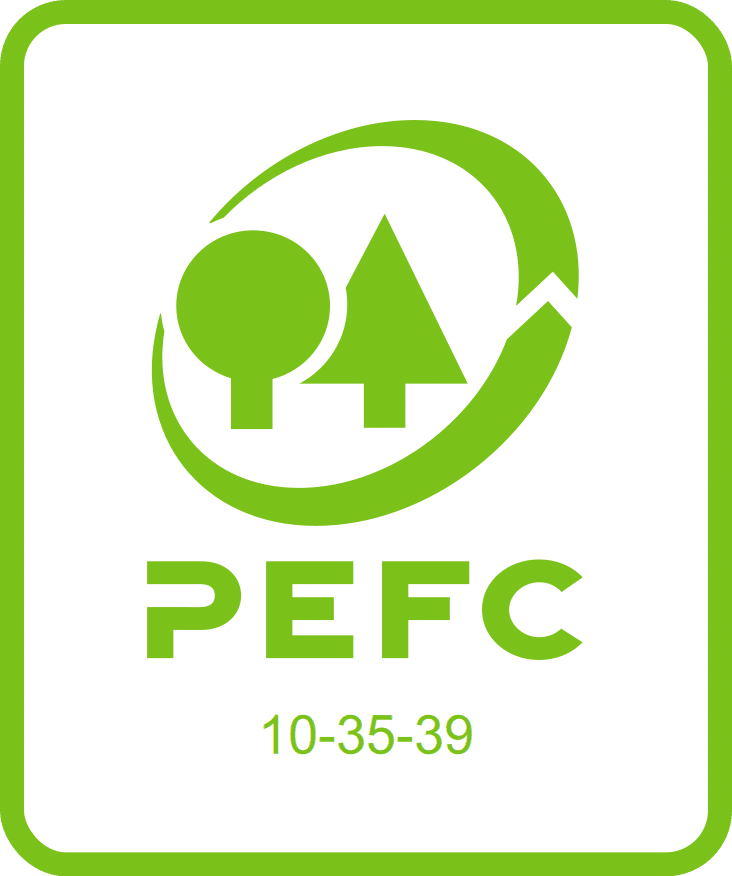How to install a click-lock floating wood floor?
The name “floating wood floor” comes from its installation method. Unlike solid wood floors that are installed using glue or nails, a floating wood floor is installed by either clicking together or gluing tongue-and-groove boards, requiring minimal tools and expertise.
Types of floating wood floor
There are several types of floating floor available. Here are the characteristics of each to help you make the best choice:
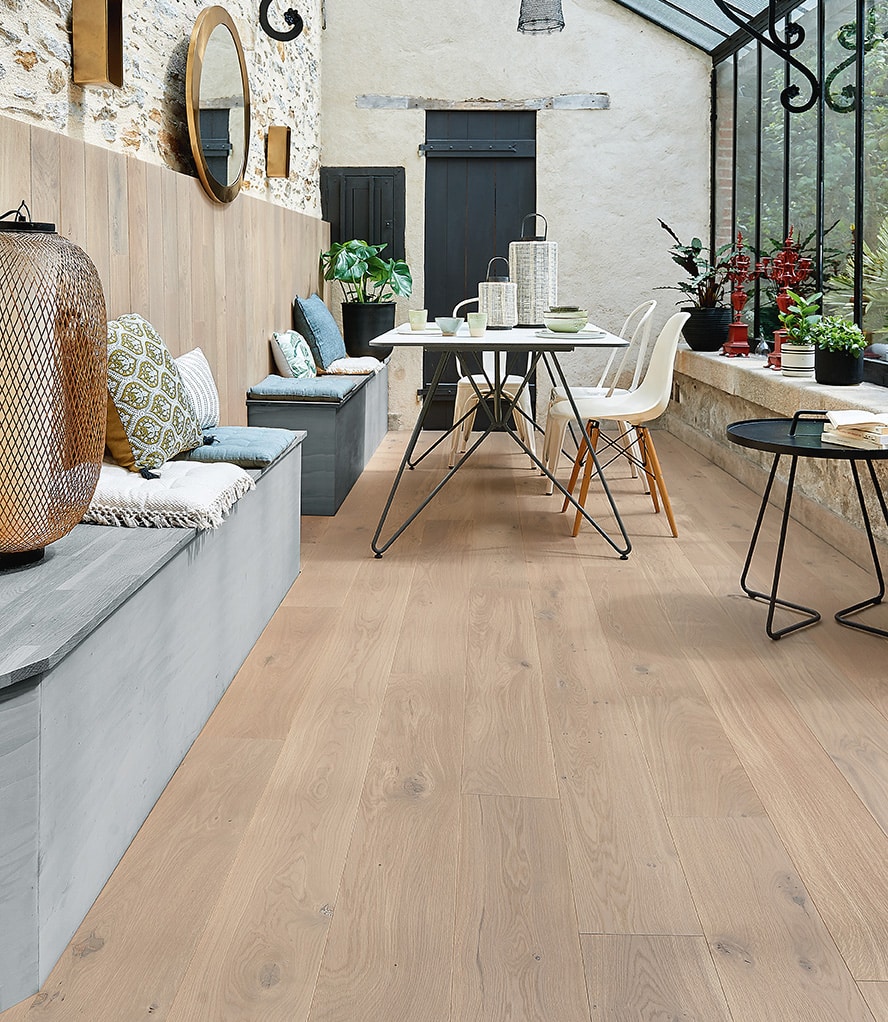
- Engineered wood floor: Consists of a noble wood layer (at least 2.5mm thick) glued onto a plywood or fiberboard panel. This panel is then glued onto a stabilizing layer to avoid warping.
- Laminate floor: Composed of a composite wood base, a decorative layer that mimics various wood appearances, and a top layer to protect against wear. It is not considered to be a wood floor as it lacks a real wood surface.
For more information and advice on choosing the right type of floating wood floor, read our article “Which wood floor to choose?”
Guide to installing a click-lock floating wood floor
Floating wood flooring is very easy to install thanks to its click-lock mechanism. It requires minimal tools and time to add charm and comfort to your home or apartment.
Essential tools and materials
To install your floating wood floor, you will need the following:
- Wood floor planks (estimate 2-5% more than your actual square footage to account for cuts and waste)
- Underlay
- Baseboards and thresholds
- Safety gear: gloves and kneepads
Installation Steps
There are four main steps to installing a click-lock floating wood floor:
- Preparation
- Laying the floor planks
- Special cuts
- Finishing touches
Step 1: Preparation
Ensure the surface is flat, dry, stable, and clean. Floating wood flooring can be installed over tile, vinyl, or old wood flooring, but not over carpet. For heated floors, ensure compatibility with your chosen wood floor.
To check the flatness of the floor, use a mason’s rule; variations should not exceed 5mm under a 2m rule or 1mm under a 20cm rule. Store your wood floor planks in the room for 48 hours before installation to acclimatize them to the room’s humidity and temperature.
Step 2: Laying the floor planks
Start in a corner of the room with the tongue side facing the wall, after cutting off the tongue. Ensure an expansion gap of 8 mm around the room using spacers. Lay the first row of planks, cutting the final plank to fit while maintaining the expansion gap. Continue with subsequent rows, starting each row with the leftover piece from the previous row, provided it is at least twice the width of a plank.
Step 3: Special cuts
For obstacles such as pipes, use a contour gauge to transfer the profile to the plank, then cut using a jigsaw. For angles, use a contour gauge or angle finder to mark and cut the plank accordingly. For the last row, measure and cut the planks to fit, ensuring the expansion gap is maintained.
Step 4: Finishing touches
After laying the flooring, leave the spacers in place for 24 hours if glue was used on tongue-and-groove joints; otherwise, remove them immediately. Trim any excess underlay with a utility knife.
Installing baseboards: Measure, cut, and glue the baseboards, leaving a 1mm gap for expansion.
Thresholds: Measure, cut, and install thresholds to transition between different flooring types, either by gluing or screwing them in place.
Finally, rehang the doors, ensuring they swing freely without scraping the floor. If necessary, trim the bottom of the doors slightly.
To keep your new floating wood floor in perfect condition, consult our practical guide for maintaining floating wood floors.

